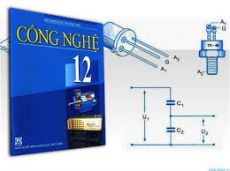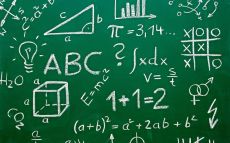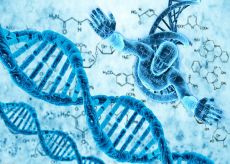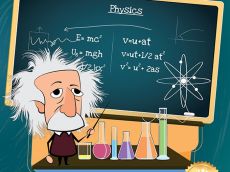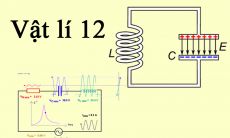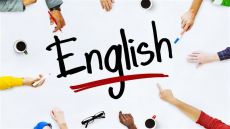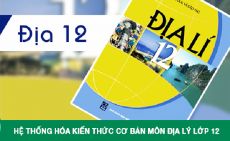Đề thi thử THPT QG năm 2022 môn Tiếng Anh
Trường THPT Lý Tự Trọng
-
Mark the letter A, B, C, or D on your answer sheet to indicate the correct answer to each of the following questions
Câu 1:
On ............ inspection, one may realise that the farmers do not use fertilisers and pesticides for the simple reason that it would not pay off.
A. closer
B. better
C. nearer
D. intimate
-
Câu 2:
It is a huge transition, but achievable - particularly if we .......... the massive present waste of energy.
A. drop out of
B. cut down on
C. drop in on
D. go on with
-
Câu 3:
Sidebar can keep information and tools .......... available for you to use.
A. solely
B. warmly
C. readily
D. shortly
-
Câu 4:
Scientists have found a way by which they can convert all blood types into O- type blood, .........?
A. can they
B. has it
C. haven’t they
D. have they
-
Câu 5:
He didn't achieve much at school in academic terms but he was .......... of his elders and listened to them.
A. respectful
B. respective
C. respectable
D. respected
-
Câu 6:
“Did you enjoy your graduation ceremony?” “Oh yes; I didn’t like .......... photographed all the time, though.”
A. to have been
B. having been
C. being
D. it to be
-
Câu 7:
Visitors to the park must pay an entrance and boat fee, which is approximately $60 regardless of the number of people ............
A. on aboard
B. on the board
C. aboard
D. boarding
-
Câu 8:
He admits that quite .......... very experienced climbers have died on the West Ridge route.
A. a little
B. a few
C. some
D. few
-
Câu 9:
....... in Central Park every year to commemorate John Lennon’s death and to argue for stricter gun laws.
A. Huge crowds there are
B. There are huge crowds
C. That there are huge clouds
D. Are there huge crowds
-
Câu 10:
“Do you need any help with those grocery bags?” “............ to ask! Thank you!”
A. What kind are you
B. How kind are you
C. What kind of you
D. How kind of you
-
Câu 11:
This app comes with a small set of games that you can play whenever you're in the ...... for a bit of fun.
A. emotion
B. mood
C. feeling
D. mind
-
Câu 12:
Only after food has been dried or canned ............
A. that it should be stored for later consumption
B. should be stored for later consumption
C. should it be stored for later consumption
D. it should be stored for later consumption
-
Mark the letter A, B, C, or D on your answer sheet to indicate the word whose underlined part differs from the other three in pronunciation in each of the following questions
Câu 13:
Choose the word whose underlined part differs from the other three in pronunciation: wood, bookbinder, brotherhood, proof
A. wood
B. bookbinder
C. brotherhood
D. proof
-
Câu 14:
Choose the word whose underlined part differs from the other three in pronunciation: sacred, rumoured, bothered, considered
A. sacred
B. rumoured
C. bothered
D. considered
-
Mark the letter A, B, C, or D on you answer sheet to indicate the word that differs from the rest in the position of the main stress in each of the following questions
Câu 15:
Choose the word that differs from the rest in the position of the main stress: advocacy, artificial, businessman, secretary
A. advocacy
B. artificial
C. businessman
D. secretary
-
Câu 16:
Choose the word that differs from the rest in the position of the main stress: continent, permanent, coherent, sentiment
A. continent
B. permanent
C. coherent
D. sentiment
-
Mark the letter A, B, C, or D on your answer sheet to indicate the most suitable response to complete each of the following exchanges
Câu 17:
“How much do you earn in your new job?” “............”
A. You can be so bossy at times!
B. That’s a bit nosey of you!
C. You shouldn’t ask that
D. I’m not your slave!
-
Câu 18:
Julie and Ann are talking about their classmate.
- Julie: “...........”
- Ann: “Yeah, not bad, I suppose.”
A. He is quite good-looking, isn’t he?
B. Do you see him often?
C. What are you thinking?
D. How did you meet him?
-
Mark the letter A, B, C, or D on your answer sheet to indicate the sentence that best combines each pair of sentences in the following questions
Câu 19:
Increasing urbanization has led to problems. Cities are centers of civilization and culture.
A. Although increasing urbanization has led to problems but cities are centers of civilization and culture.
B. Though increasing urbanization has led to problems, cities are centers of civilization and culture.
C. Despite increasing urbanization has led to problems but cities are centers of civilization and culture.
D. In spite of increasing urbanization has led to problems but cities are centers of civilization and culture.
-
Câu 20:
It’s not fair to put all the blame on him. He’s not the only one at fault.
A. He doesn't deserve to be blamed for everything as there were others involved.
B. He deserved to be punished, but the others don’t.
C. It wouldn't be right to punish those who, like him, were not involved.
D. Only the one who were involved should be punished.
-
Mark the letter A, It, C, or l) on your answer sheet to iiuiicate the sentence that is closest in meaning to each of the following questions
Câu 21:
There is no point in your phoning Jane - she's away.
A. You waste your time if you insist on phoning Jane - she’s away.
B. Don't spend your valuable time phoning Jane - she's out.
C. Jane is very difficult to phone - she's always away.
D. It would be a waste of time phoning Jane - she's away.
-
Câu 22:
My eldest sister started working as a freelance journalist as soon as she graduated from university.
A. No sooner had my eldest sister graduated from university than she started working as a freelance journalist.
B. No sooner had my eldest sister started working as a freelance journalist than she graduated from university.
C. Hardly had my eldest started working as a freelance journalist when she graduated from university.
D. After my eldest sister graduated from university, she had started working as a freelance journalist.
-
Câu 23:
We’ve decided to replace those plastic shower curtains with these rubber ones.
A. We have decided to substitute these rubber shower curtains for those plastic ones.
B. Those plastic shower curtains are decided to replace for these rubber ones.
C. We have decided to substitute those plastic shower curtains for these rubber ones.
D. Those plastic shower curtains have been used to replace for these rubber ones.
-
Read the following passage and mark the letter A, B, C, or D on your answer sheet to indicate the correct answer to each of the questions from 24 to 30
Basic to any understanding of Canada in the 20 years after the Second World War is the country’s impressive population growth. For every three Canadians in 1945, there were over five in 1966. In September 1966 Canada’s population passed the 20 million mark. Most of this surging growth came from natural increase. The depression of the 1930s and the war had held back marriages, and the catching-up process began after 1945. The baby boom continued through the decade of the 1950s, producing a population increase of nearly fifteen percent in the five years from 1951 to 1956. This rate of increase had been exceeded only once before in Canada’s history, in the decade before 1911, when the prairies were being settled. Undoubtedly, the good economic conditions of the 1950s supported a growth in the population, but the expansion also derived from a trend toward earlier marriages and an increase in the average size of families. In 1957 the Canadian birth rate stood at 28 per thousand, one of the highest in the world.
After the peak year of 1957, the birth rate in Canada began to decline. It continued falling until in 1966 it stood at the lowest level in 25 years. Partly this decline reflected the low level of births during the depression and the war, but it was also caused by changes in Canadian society.
Young people were staying at school longer, more women were working; young married couples were buying automobiles or houses before starting families; rising living standards were cutting down the size of families. It appeared that Canada was once more falling in step with the trend toward smaller families that had occurred all through the Western world since the time of the Industrial Revolution.
Although the growth in Canada’s population had slowed down by 1966 (the increase in the first half of the 1960s was only nine percent), another large population wave was coming over the horizon. It would be composed of the children who were born during the period of the high birth rate prior to 1957.
Câu 24:
What does the passage mainly discuss?
A. Educational changes in Canadian society
B. Canada during the Second World War
C. Population trends in postwar Canada
D. Standards of living in Canada
-
Câu 25:
The word “five” in bold refers to ..............
A. Canadians
B. years
C. decades
D. marriages
-
Câu 26:
The word “surging” in bold is closest in meaning to ............
A. new
B. extra
C. accelerating
D. surprising
-
Câu 27:
The author suggests that in Canada during the 1950’s ...............
A. the urban population decreased rapidly
B. fewer people married
C. economic conditions were poor
D. the birth rate was very high
-
Câu 28:
The word “trend” in bold is closest in meaning to ...............
A. tendency
B. aim
C. growth
D. directive
-
Câu 29:
The word “peak” in bold is closest in meaning to .............
A. pointed
B. dismal
C. mountain
D. maximum
-
Câu 30:
The author mention all of the following as causes of declines in population growth after 1957 EXCEPT _____________
A. people being better educated
B. people getting married earlier
C. better standards of living
D. couples buying houses
-
Read the following passage and mark the letter A, B, C or D on your answer sheet to indicate the correct word or phrase that best fits each of the numbered blanks from 31 to 35
Why is culture important and how does it answer the question “What is cultural identity?" Culture is the underlying foundation of traditions and beliefs that help a person relate to the world around then. It is the basis for any superstitions they may have. It is the aversion to (31) .............types of meat, or which days you can work on. Culture gives us a (32) .......... starting point when beginning to search for our roots. Knowing (33) ............a person comes from will help to define how they look at their family obligations as well as how they celebrate important milestones in life. As a person has given up their cultural identity, they no longer can identify themselves with the things that were (34) ............ the most important things in their lives. They lose direction. As time (35) .......... by and they continue to forget about their past and their natural traditions, their identity becomes less and less pronounced.
Câu 31:
(31) ..................
A. especial
B. special
C. specific
D. typical
-
Câu 32:
(32) ..................
A. definitive
B. definite
C. definition
D. definitively
-
Câu 33:
(33) ..................
A. by which
B. how
C. when
D. where
-
Câu 34:
(34) ..................
A. at once
B. once
C. one time
D. for once
-
Câu 35:
(35) ..................
A. goes
B. flies
C. passes
D. walks
-
Mark the letter A, B, C, or D on your answer sheet to indicate the word(s) CLOSEST in meaning to the underlined word(s) in each of the following questions
Câu 36:
Choose the word(s) CLOSEST in meaning to the underlined word(s): Some supporters were shouting to him and he was talking back and I told him to calm down.
A. answering impertinently
B. talking again
C. answering immediately
D. talking patiently
-
Câu 37:
Choose the word(s) CLOSEST in meaning to the underlined word(s): Birds are at their most vulnerable when they leave their nests and find food on their own.
A. strong
B. susceptible
C. powerful
D. invincible
-
Mark the letter A, B, C, or D on your answer sheet to indicate the word(s) OPPOSITE in meaning to the underlined word(s) in each of the following questions
Câu 38:
Choose the word(s) OPPOSITE in meaning to the underlined word(s): His jokes won't be to everyone's taste because it is so close to the bone.
A. personal
B. offensive
C. respectful
D. annoying
-
Câu 39:
Choose the word(s) OPPOSITE in meaning to the underlined word(s): Most impoverished families' homes are primitive shelters made of scrap materials, which provide minimal privacy and protection against the elements.
A. original
B. basic
C. modem
D. recent
-
Mark the letter A, B. C, or D on your answer sheet to show the underlined part that needs correction in each of the following questions
Câu 40:
Find the mistake: You should take out insurance for your house from any possible damage. Earthquakes sometimes occur here.
A. take out
B. for
C. from
D. occur
-
Câu 41:
Find the mistake: An understanding of engineering theories and problem are impossible until basic arithmetic is fully mastered.
A. engineering theories
B. are
C. is
D. mastered
-
Câu 42:
Find the mistake: The alarm was raised too late because when the emergency crew arrived, no less than 10,000 gallons of oil has gusted into the stream.
A. raised
B. arrived
C. less
D. has gusted
-
Read the following passage and mark the letter A, B, C, or D on your answer sheet to indicate the correct answer to each of the questions from 43 to 50
Glass is a remarkable substance made from the simplest raw materials. It can be colored or colorless, monochrome or polychrome, transparent, translucent, or opaque. It is lightweight impermeable to liquids, readily cleaned and reused, durable yet fragile, and often very beautiful Glass can be decorated in multiple ways andits optical properties are exceptional. In all its myriad forms - as table ware, containers, in architecture and design - glass represents a major achievement in the history of technological developments.
Since the Bronze Age about 3,000 B.C. glass has been used for making various kinds of objects. It was first made from a mixture of silica, line and an alkali such as soda or potash, and these remained the basic ingredients of glass until the development of lead glass in the seventeenth century. When heated, the mixture becomes soft and malleable and can be formed by various techniques into a vast array of shapes and sizes. The homogeneous mass thus formed by melting then cools to create glass, but in contrast to most materials formed in this way (metals, for instance), glass lacks the crystalline structure normally associated with solids, and instead retains the random molecular structure of a liquid. In effect, as molten glass cools, it progressively stiffens until rigid, but does so without setting up a network of interlocking crystals customarily associated with that process. This is why glass shatters so easily when dealt a blow. Why glass deteriorates over time, especially when exposed to moisture, and why glassware must be slowly reheated and uniformly cooled after manufacture to release internal stresses induced by uneven cooling.
Another unusual feature of glass is the manner in which its viscosity changes as it turns from a cold substance into a hot, ductile liquid. Unlike metals that flow or “freeze” at specific temperatures glass progressively softens as the temperature rises, going through varying stages of malleability until it flows like a thick syrup. Each stage of malleability allows the glass to be manipulated into various forms, by different techniques, and if suddenly cooled the object retains the shape achieved at that point. Glass is thus amenable to a greater number of heat-forming techniques than most other materials.
Câu 43:
Why does the author list the characteristics of glass in paragraph 1?
A. to demonstrate how glass evolved
B. to show the versatility of glass
C. to explain glassmaking technology
D. to explain the purpose of each component of glass
-
Câu 44:
The word "durable" in paragraph 1 is closest in meaning to ___________.
A. lasting
B. delicate
C. heavy
D. plain
-
Câu 45:
What does the author imply about the raw materials used to make glass?
A. They were the same for centuries.
B. They are liquid.
C. They are transparent.
D. They are very heavy.
-
Câu 46:
According to the passage, how is glass that has cooled and become rigid different from most other rigid substances?
A. It has an interlocking crystal network.
B. It has an unusually low melting temperature.
C. It has varying physical properties.
D. It has a random molecular structure.
-
Câu 47:
The words “exposed to” in paragraph 2 most likely mean _____________.
A. hardened by
B. chilled with
C. subjected to
D. deprived of
-
Câu 48:
What must be done to release the internal stresses that build up in glass products during manufacture?
A. The glass must be reheated and evenly cooled.
B. The glass must be cooled quickly.
C. The glass must be kept moist until cooled.
D. The glass must be shaped to its desired form immediately.
-
Câu 49:
The word “it” in paragraph 3 refers to ____________.
A. feature
B. glass
C. manner
D. viscosity
-
Câu 50:
According to the passage, why can glass be more easily shaped into specific forms than can metals?
A. It resists breaking when heated.
B. It has better optical properties.
C. It retains heat while its viscosity changes.
D. It gradually becomes softer as its temperature rises.



